Grimaces and disproportionate bodies, exaggerated expressions, protruding noses and gnarled hands: these are the elements that strike the viewer at first glance in the painting depicting the three alchemists at work by Pietro della Vecchia (Vicenza, 1602/1603 - 1678). Three figures with “grotesque and deformed forms,” as Egidio Martini called them, immersed in their mysterious workings, in which the line between the human and the monstrous becomes thin. The seriousness of alchemical investigation is transformed here into a grotesque scene, as if it belonged to the theater of the absurd, where the quest for knowledge becomes a caricature of it. It is as if alchemy unleashes a desire to master matter and its secrets so powerful that it physically deforms those who approach and study it, thus revealing its dark and disturbing, but at the same time fascinating, side. It is a desire therefore that ends up deforming those who pursue it.
Exhibited at the Florence Biennale Internazionale dell’ Antiquariato 2024 by Giorgio Baratti Antiquario, the work created by the Venetian painter in about 1660 is, as expressed by Martini, part of a group of canvases with grotesque subjects that are similar to each other “both in inventiveness and in the spirit with which the grotesque and deformed forms of the figures are treated”: these include, in particular, the series of Allegories of the Five Senses, formerly in the Scarpa collection in Venice, and the Three Soldier Dice Players.
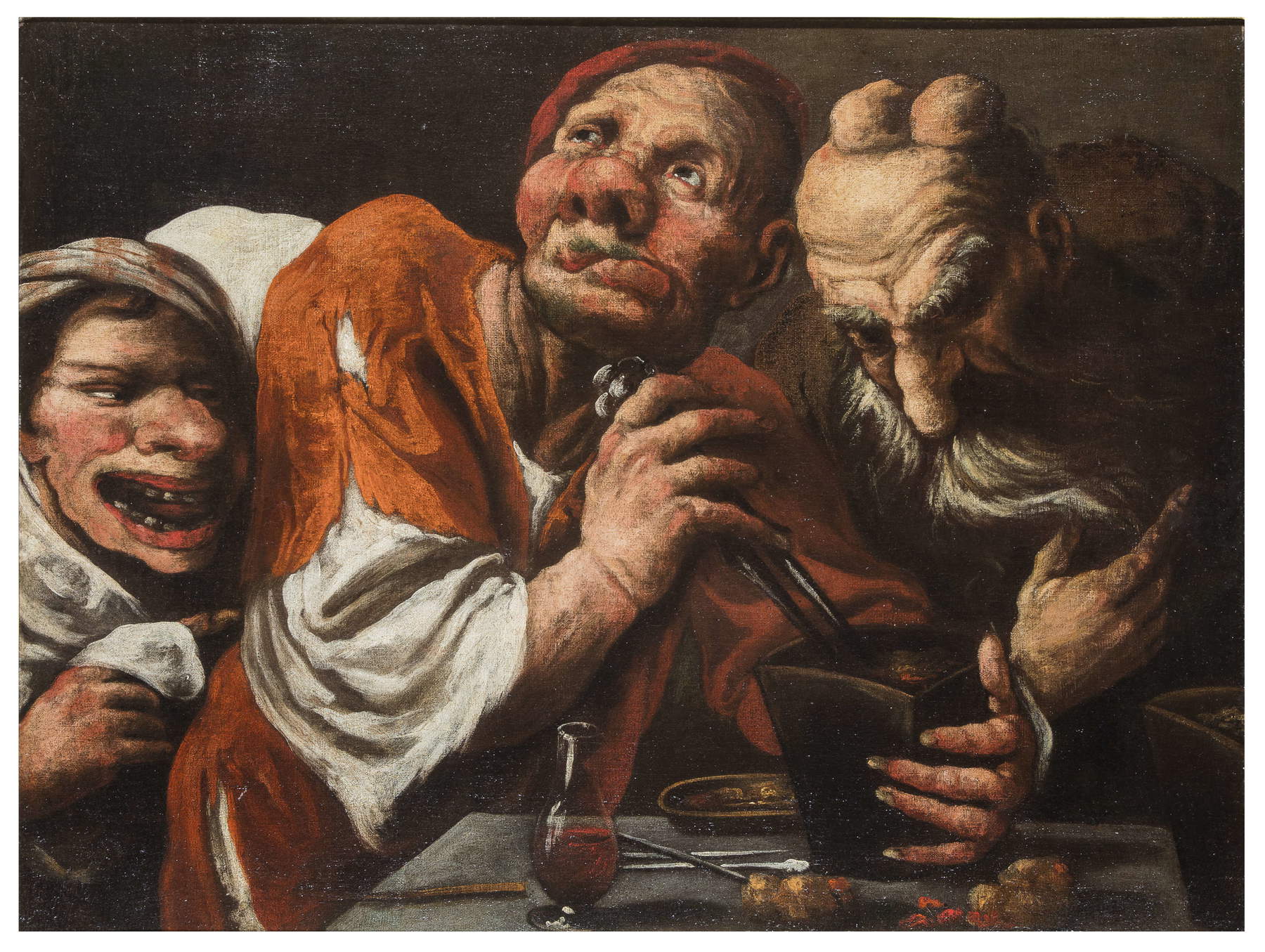
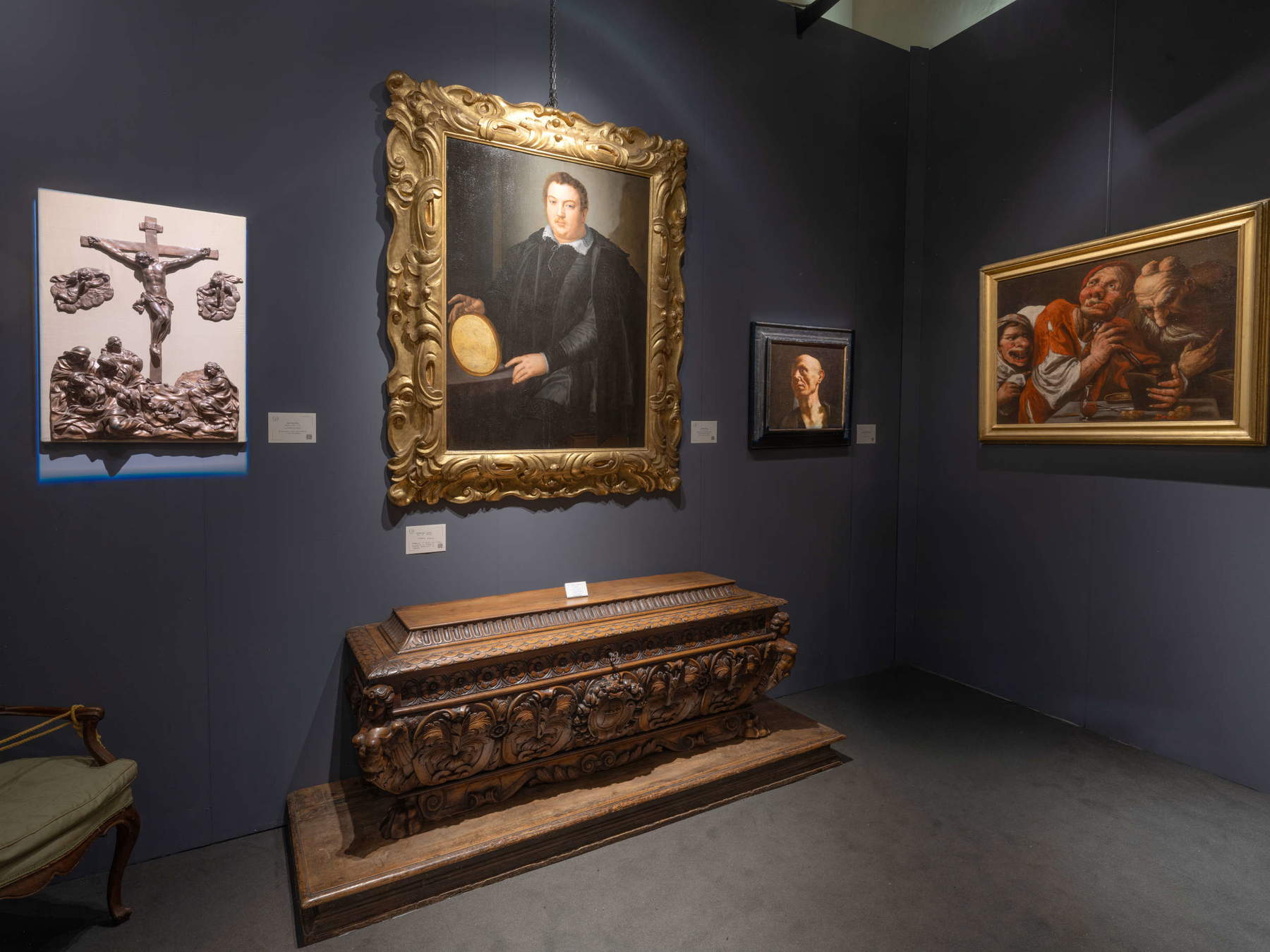
It is crucial to consider how the dimension of the grotesque found particular exaltation in the cultural climate of the Serenissima in the mid-seventeenth century, a context in which Pietro della Vecchia was also fully immersed. His artistic sensibility cannot be understood without taking into account the artistic and literary environment that animated Venice in those years. In this scenario the influence of theAccademia degli Incogniti, one of the most active and lively academies of 17th-century Venice, played a decisive role. Founded by Giovan Francesco Loredano, the Academy was distinguished by its nonconformist spirit and the intellectual freedom with which its members approached the humanistic disciplines with openings also to the scientific and medical worlds. Between 1630 and 1660, it contributed significantly to defining the artistic and cultural orientations of a whole group of Venetian painters who maintained close relations with its members, thus fostering the birth of a visual language steeped in irony and ambiguity.
As Bernard Aikema (2001) has pointed out, precisely such a climate of lively interaction between arts and letters “determined to a large extent the artistic and cultural interests of a group of Venetian painters,” including Della Vecchia himself, whose pictorial language fully reflects this cultural complexity and the attraction to the grotesque typical of the Venetian milieu of the time.
And the painting of the Alchemists is an expression of this fascination with the grotesque and the caricatural, as is well noted by the figures depicted, which are deformed, as if to reveal a kind of obsession. The work depicts the crucial moment of the alchemical process, that of the transmutation of the vile metal into gold, the symbol par excellence of perfection and spiritual purity. Two nuggets still stained red, the residue of a previous chemical reaction, stand out in the foreground next to a cruet containing a red substance, probably the distillate in alcohol solution of the so-called philosopher’s stone. Also known as the ruby of the wise, this stone represented for alchemists not only the key to material wealth, but also the ultimate synthesis of human knowledge. Its powers in fact included that of healing all illnesses and bestowing immortality on those who possessed it, but also that of instilling absolute knowledge of things. It was thus the symbol of an aspiration as noble as it was dangerous: man’s desire to transcend the limits imposed by nature in order to approach perfection. However, the artist, through the grotesque and deforming aspect of the composition, seems to want to warn the observer against the deception of such illusions.
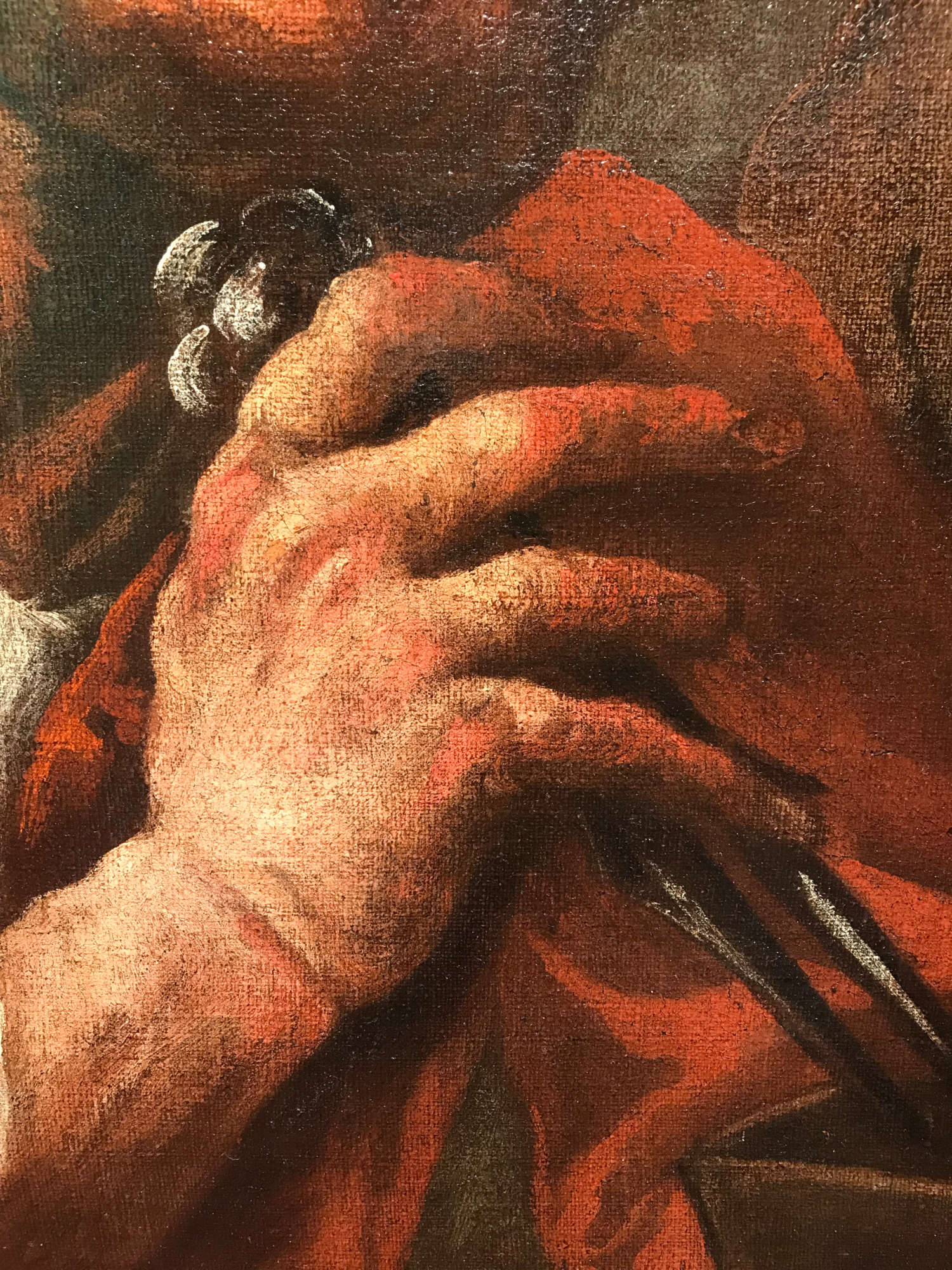
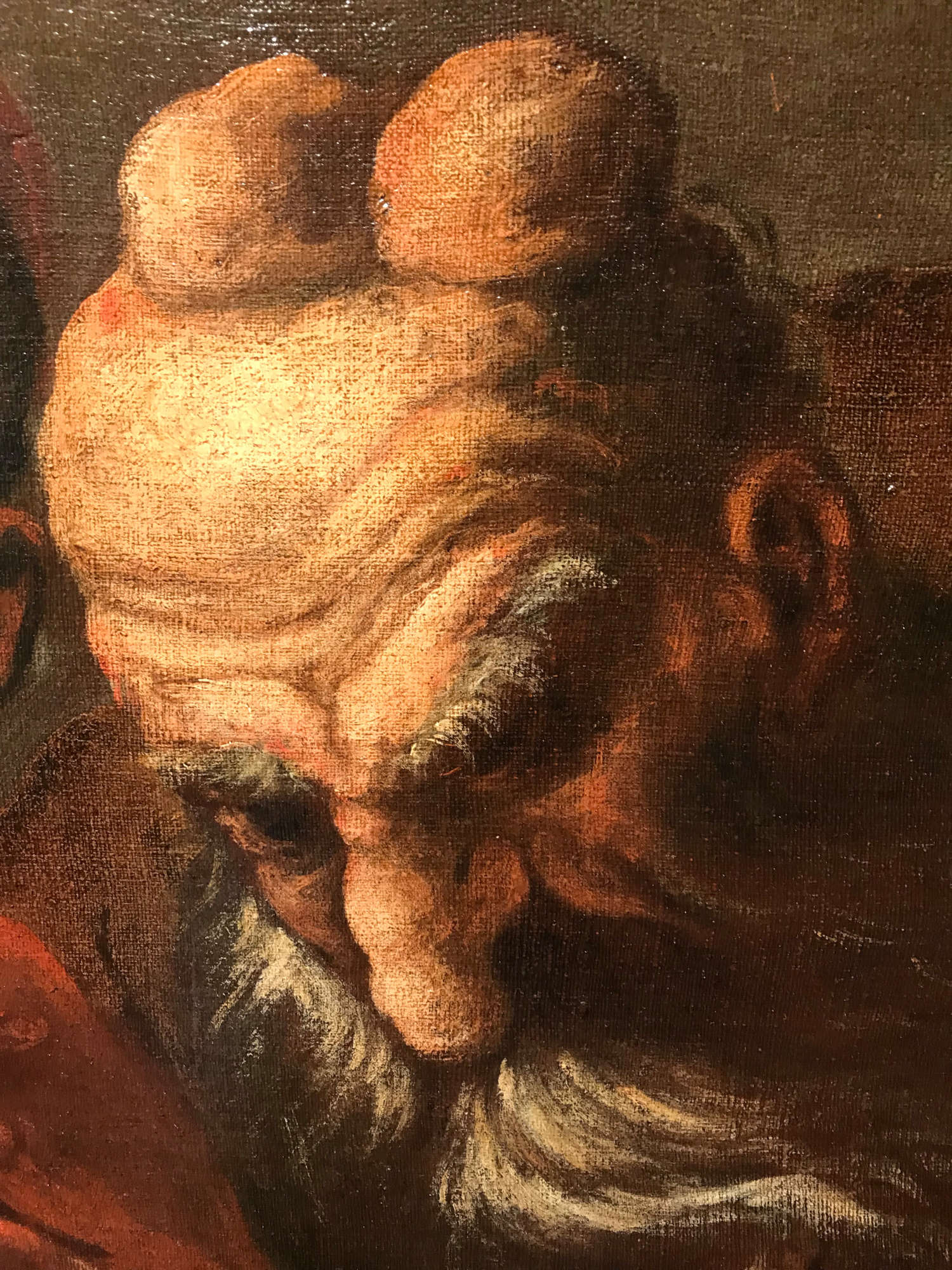
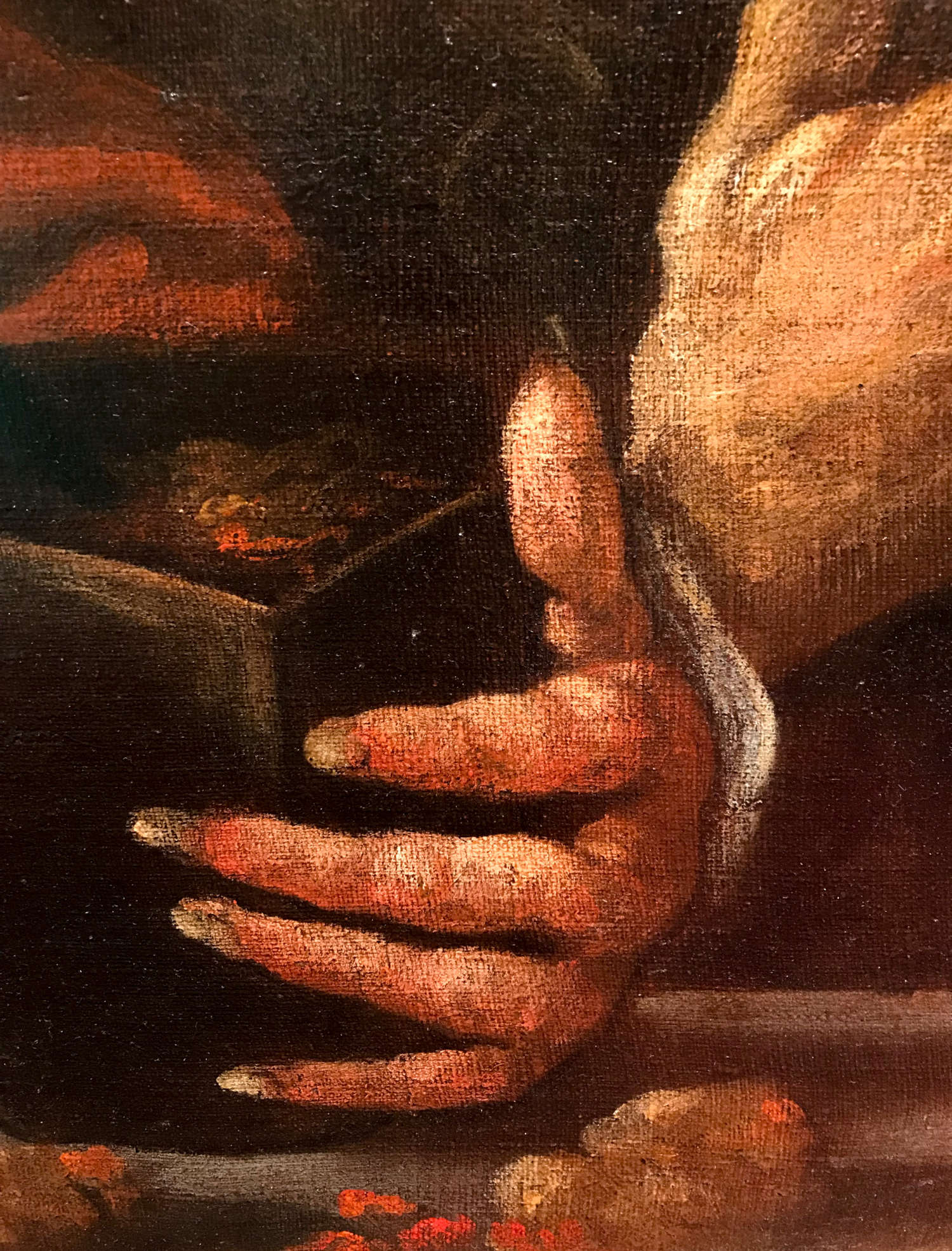
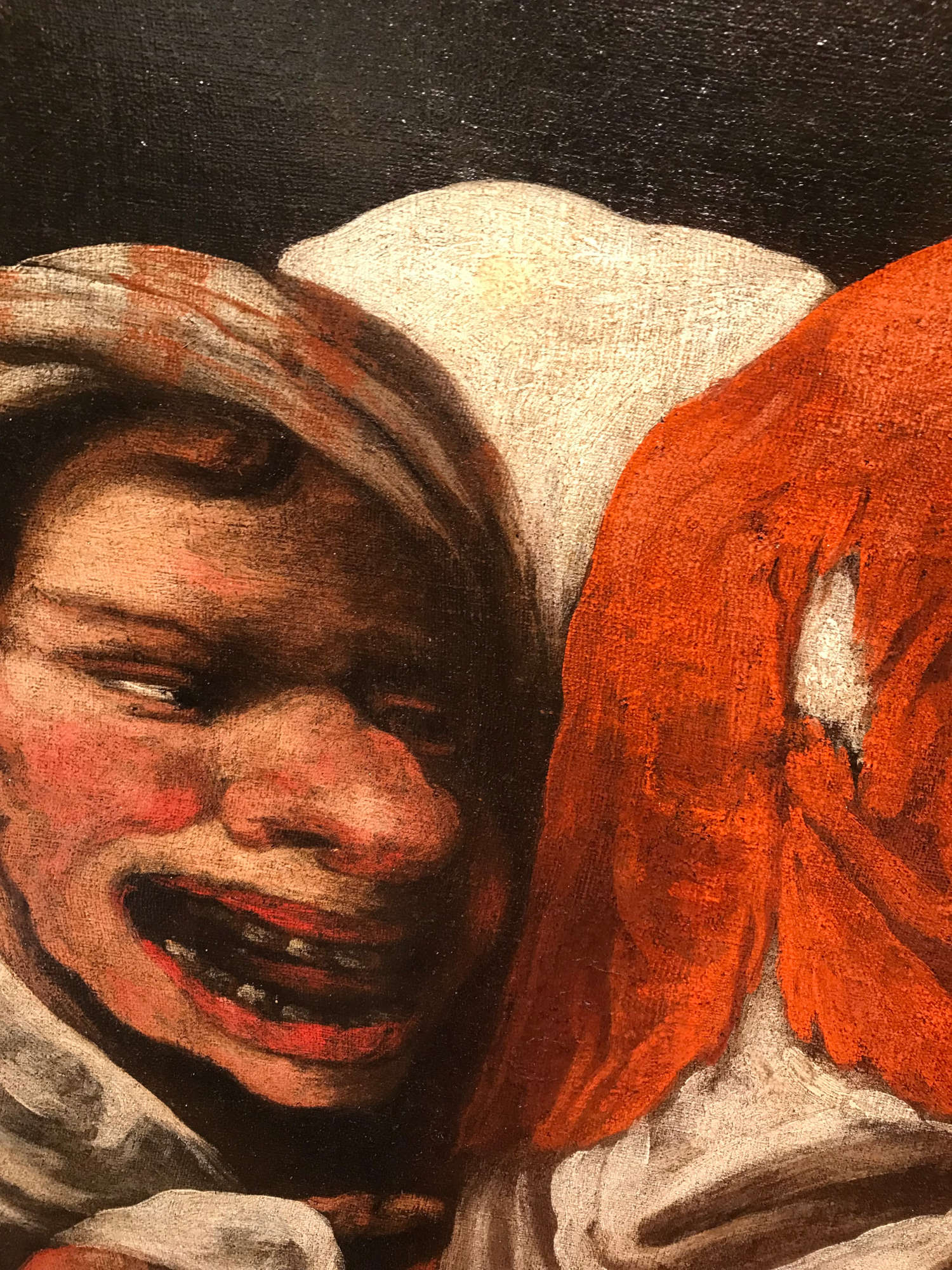
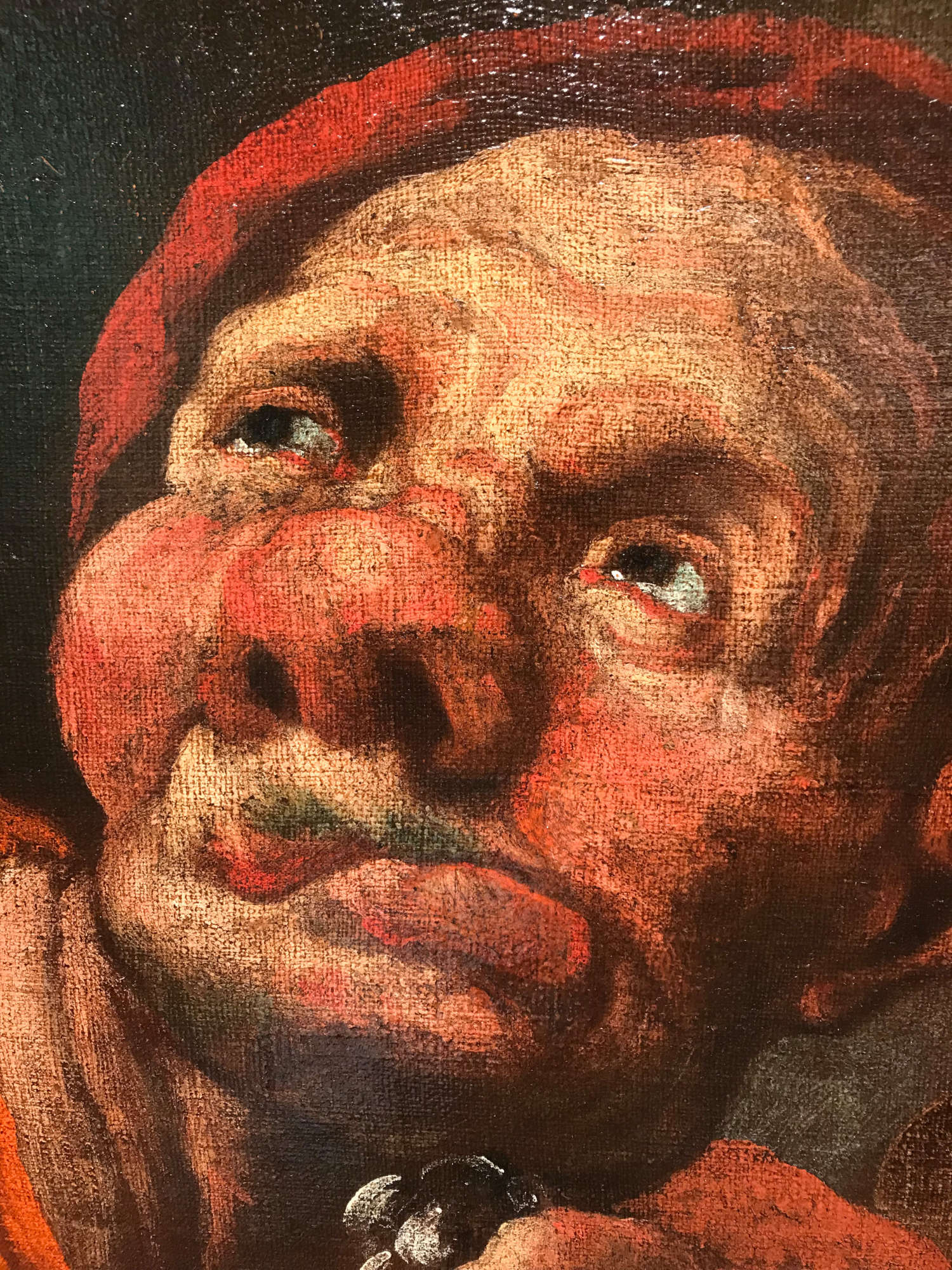
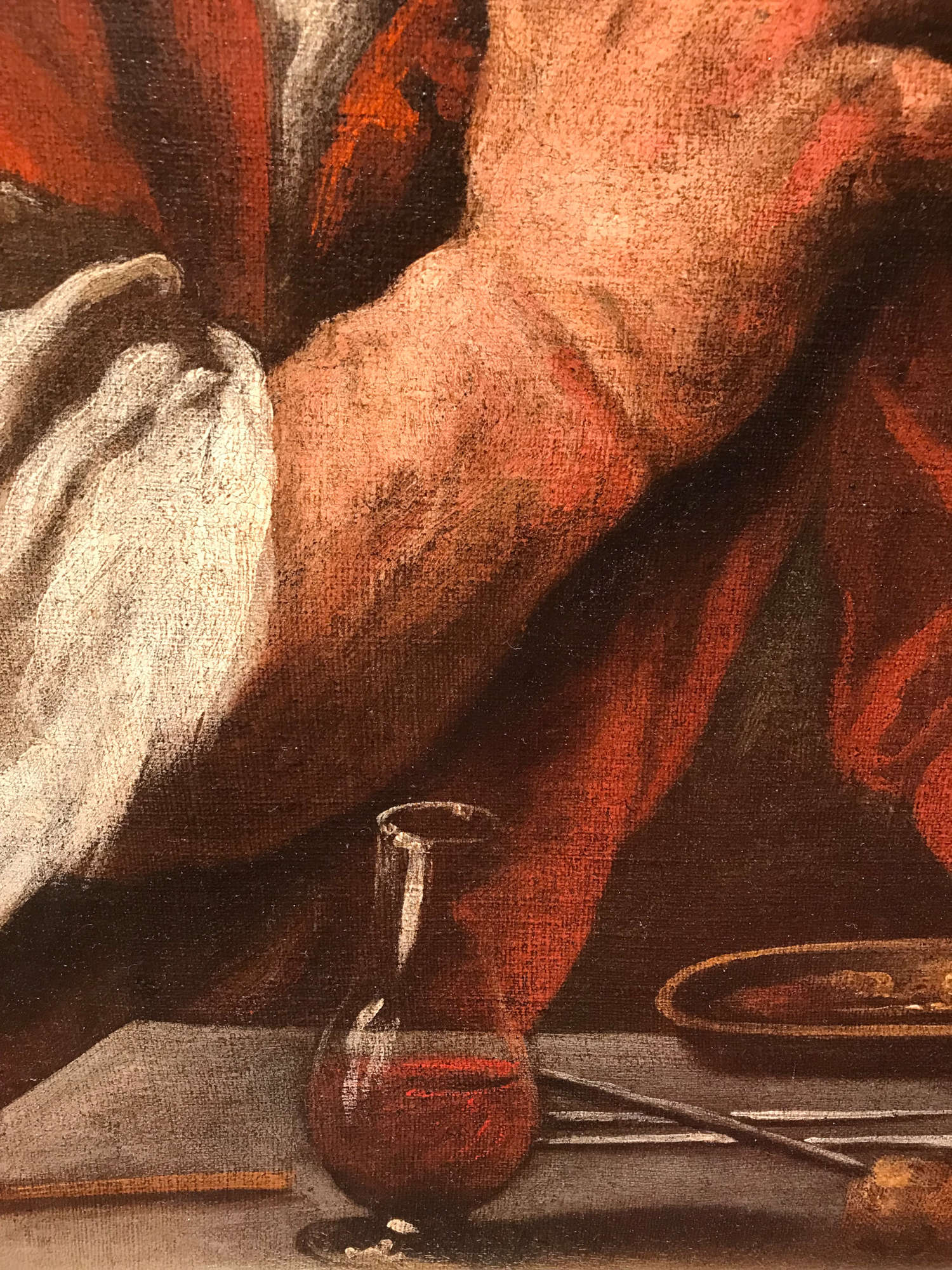
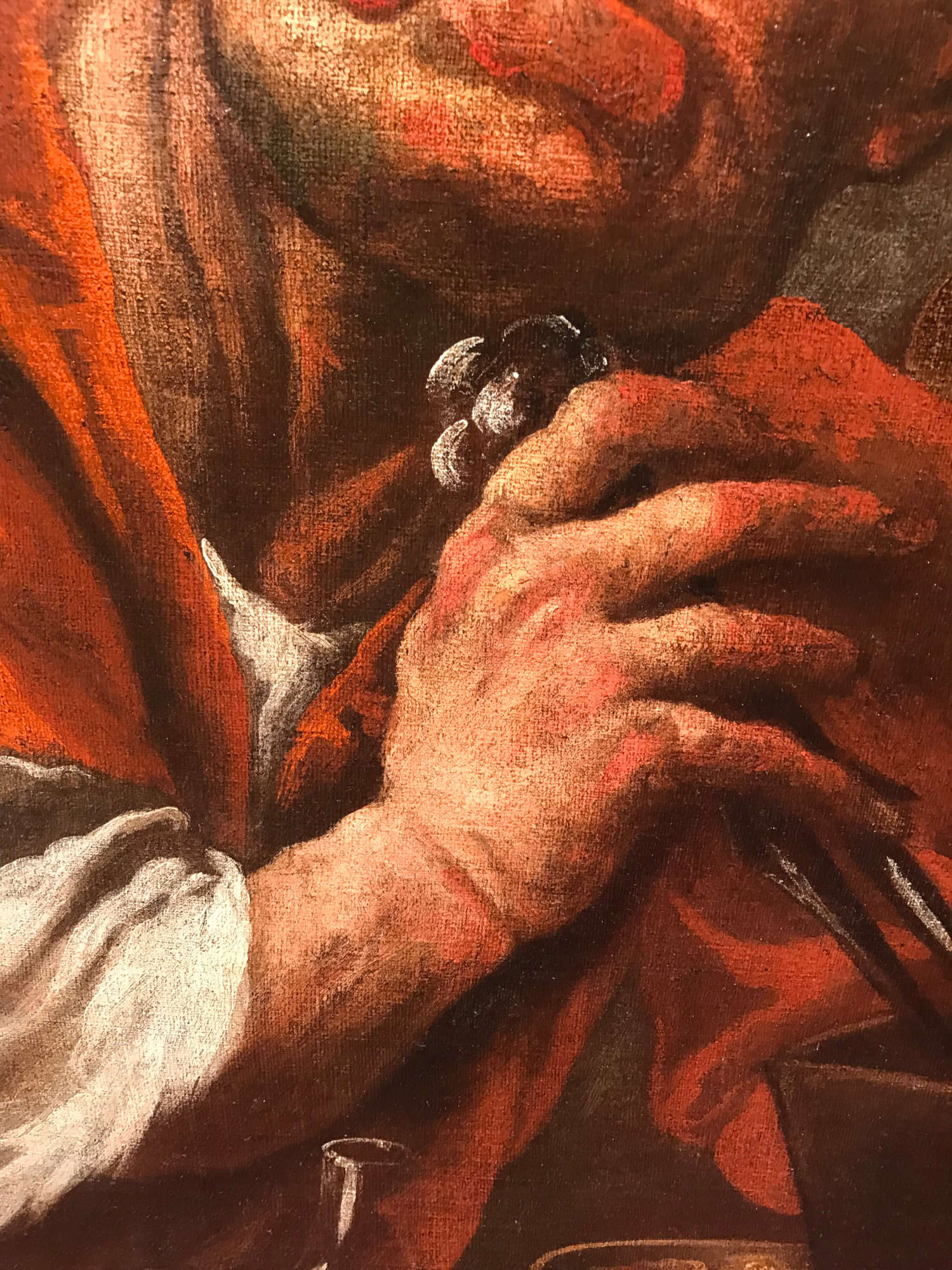
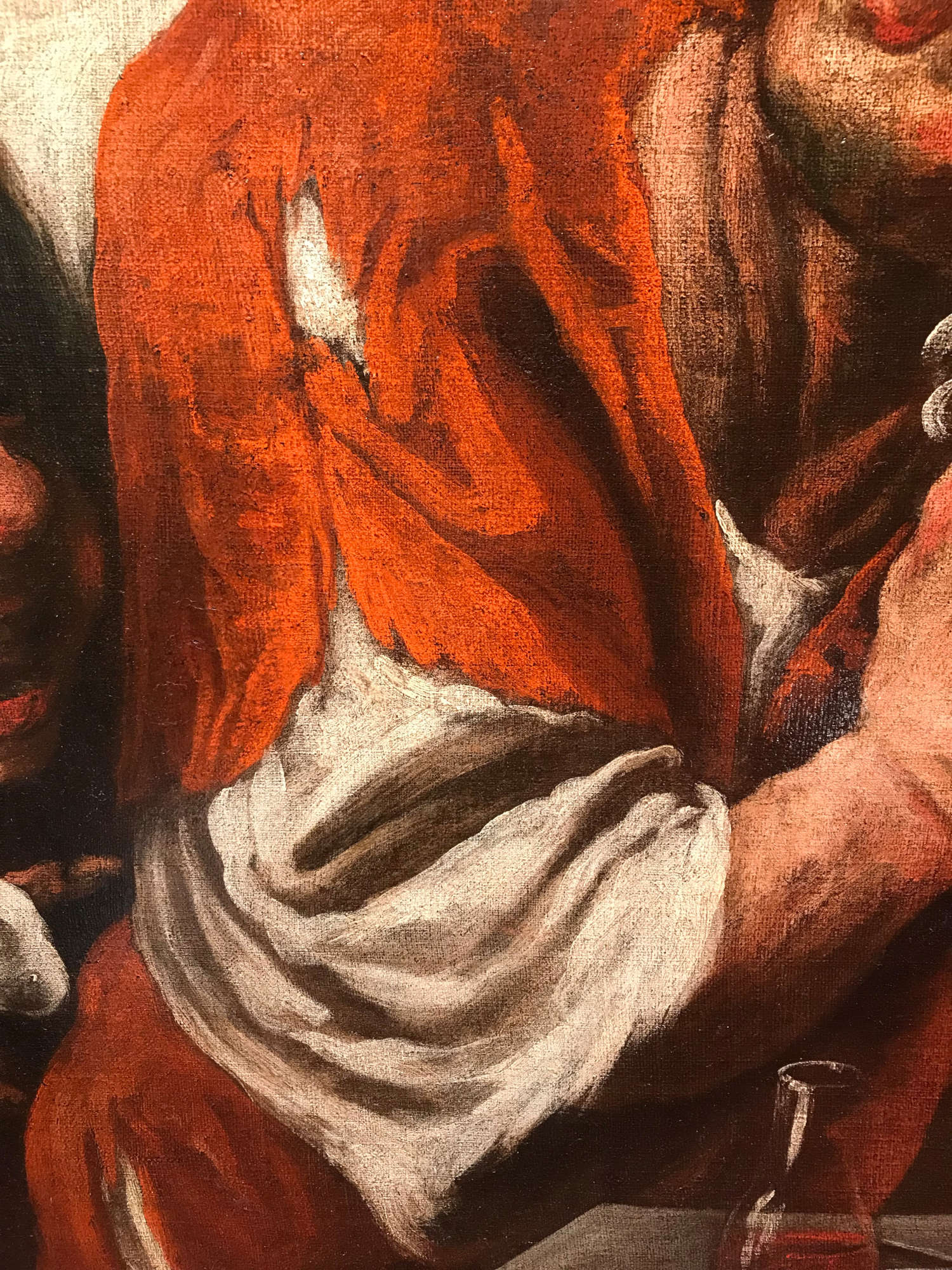
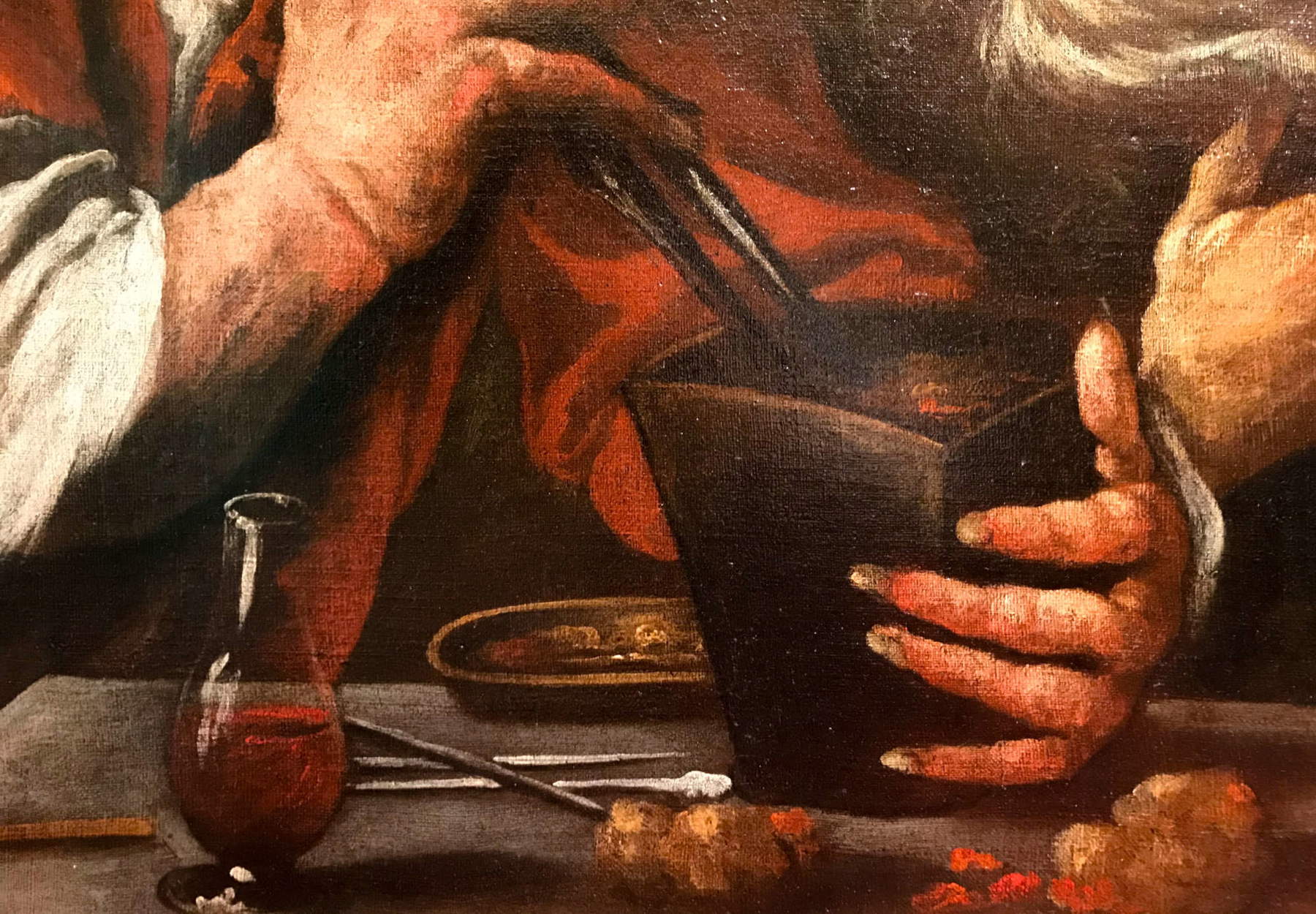
The appearance of the three alchemists, with their pulled faces and feverish gaze, highlights not so much the quest for wisdom or the tension toward the transcendent, but rather greed and lust for power. Their dedication to the alchemical art appears not as a spiritual path, but as a desperate attempt to dominate matter in order to achieve quick and easy gain through the “making” of gold. In this way, the artist denounces the deception of false knowledge and the eternal weakness of man, who, in order to possess wealth and absolute knowledge, ends up reducing himself to a caricature of himself, a victim of his own ambitions and desires.
Peter della Vecchia thus performs a total semantic reversal. Gold here becomes a symbol of material lust, while the figure of thealchemist, wise and knowledgeable, is reduced to that of a deformed grotesque figure, a victim of his own illusions. In this way the painter not only reverses the original meaning of the alchemical myth, but also denounces its moral degeneration, showing how the tension toward the absolute can become corrupted when bent to the desire for power and possession. This reversal was also in line with the Accademia degli Incogniti, in which there was an obvious Marinist imprint, which was characterized in the reversal of canons and the use of paradox to upset tradition.
As Enrico Maria Dal Pozzolo writes, “this singular painter made nonconformity one of his hallmarks. Already at the beginning he had a somewhat dissociated training, so to speak, since the poles that directed it were on the one hand the solar myth of Titianesque classicism advocated by Padovanino and on the other the chiaroscuro Caravaggesque dramas of Saraceni, Paolini and Riminaldi. The result was an extreme technical versatility that led him to results that were also very different from each other.” And among his greatest artistic achievements are, Dal Pozzolo explains, “philosophers, soldiers, even nannies: the most diverse social categories were deformed under his ruthless lens, constituting a sort of comic register parallel to certain current iconography. And it was precisely on this side that he often gave his best.” His primary intent, however, was the “poetics of astonishment,” “a sarcastic vein expressed in entirely unprecedented ways.”
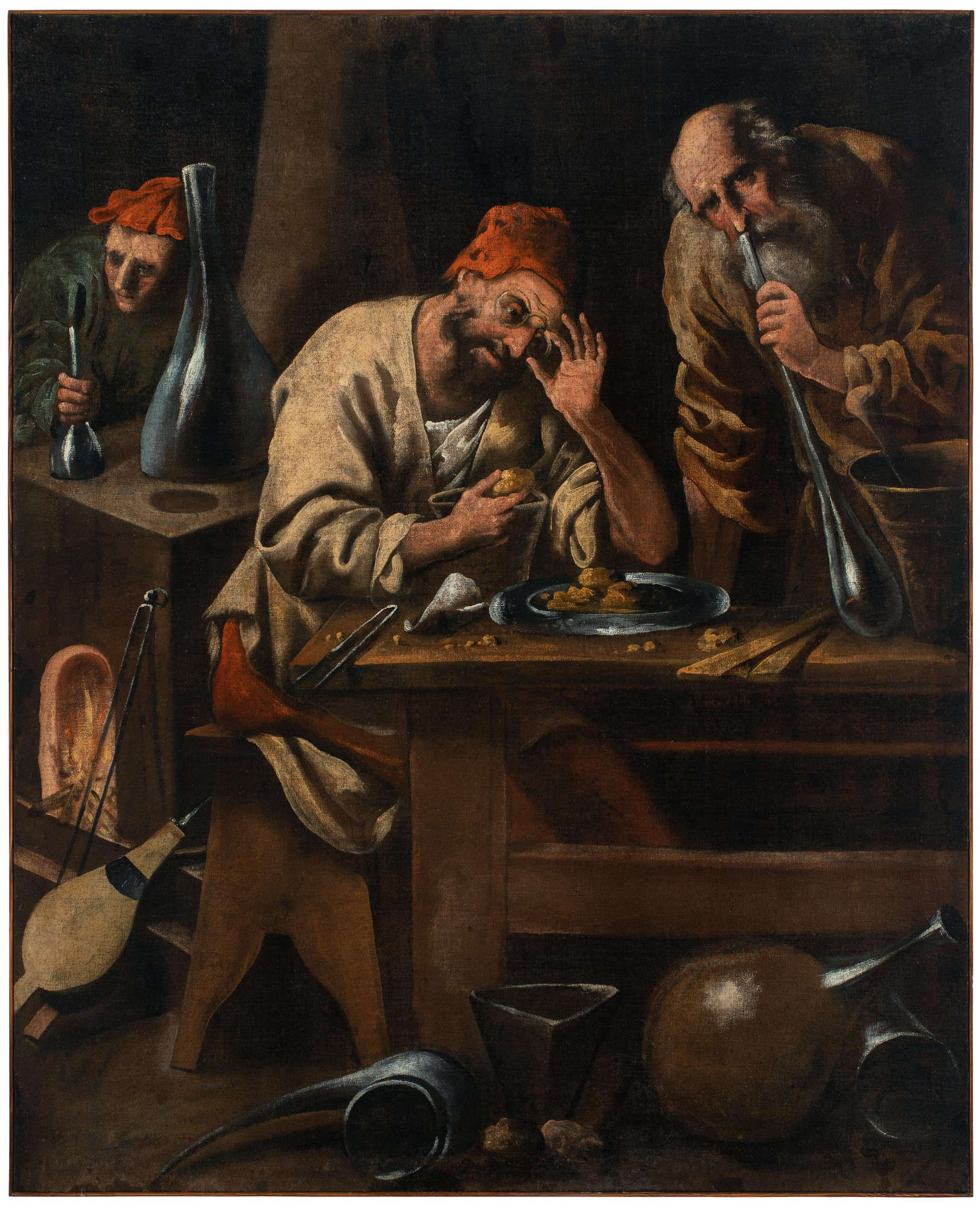
Of the same subject of the Alchemists, Pietro della Vecchia produced another work, albeit in other terms, now preserved in the Civic Museums of Padua: the three characters are also inside an alchemy workshop, but if in the other painting they were one next to the other and with a close view of their faces toward the viewer, in this other work they appear spaced out and almost full-length (the one in the center observes gold, the one on the right sniffs the contents of a long, narrow-necked cruet, the one on the left places a glass cruet on a burning furnace). But above all, the artist does not depict them here with grotesque aspects and concentrates the color range on brown and brown tones, unlike the previously mentioned work that appears, as Martini had already called it, “pictorially harmonious and beautiful in color, alive and at the same time joyful and strong.” The tools of alchemy are noted in the foreground.
With the Three Alchemists, Pietro della Vecchia translates the ambiguity of seventeenth-century knowledge that oscillates between science and illusion. The artist, with his deliberately deforming artistic language, dismantles the myth of alchemy as a path to elevation to perfection and reveals its ironic, earthly, deeply human component. In this sense, the grotesque is not mere caricature, but critical language, capable of revealing the vanity of human aspirations and the thin line separating knowledge from madness.
Warning: the translation into English of the original Italian article was created using automatic tools. We undertake to review all articles, but we do not guarantee the total absence of inaccuracies in the translation due to the program. You can find the original by clicking on the ITA button. If you find any mistake,please contact us.